BROOKLYN CIDER HOUSE BRINGS AN ANCIENT BUT UNDERSUNG INTOXICANT TO EAST WILLIAMSBURG
BY MEREDITH STETTNER
When Peter Yi, a wine industry veteran, was on a tasting trip in the Basque region of Spain—where the coveted Txakolina wine is produced and consumed with the region’s incredible fresh seafood—it was on a whim that he also opted to visit one of the region’s cideries. Yi hadn’t been crazy about the fermented juice of apples before then, but had tasted just enough in his 20 years in the business to prepare for the experience at the sagardotegi (Basque cider house).
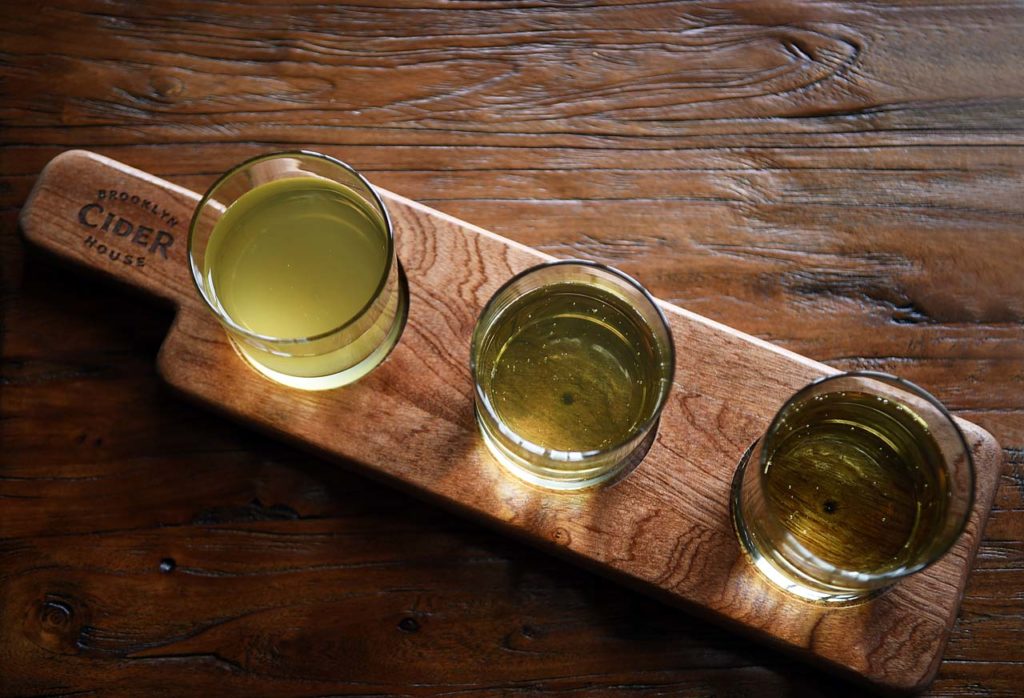
“When I arrived there, and had the food and that style of cider together, I discovered something that was missing from my life. I was blown away…I couldn’t stop thinking about it. Pairing great steak and cider from these giant barrels…I suddenly understood why people were obsessed with it in the region.
Yi also realized at that moment that he had been in the wine business all those years in part so that he could discover a new endeavor. (“One taste triggered something in me: I wanted to make this.” ) So, he resolved to bring this experience, which not nearly enough people know about, to our borough.
Yi was raised in Gravesend. With parents in the liquor industry, he had the opportunity to try wines at a young age. (“I fell head over heels for a nice Burgundy in my 20s, and saw why people consumed wine,” he recalled.) After that moment, he knew he wanted to spend his career helping people discover and pair great food and wine.
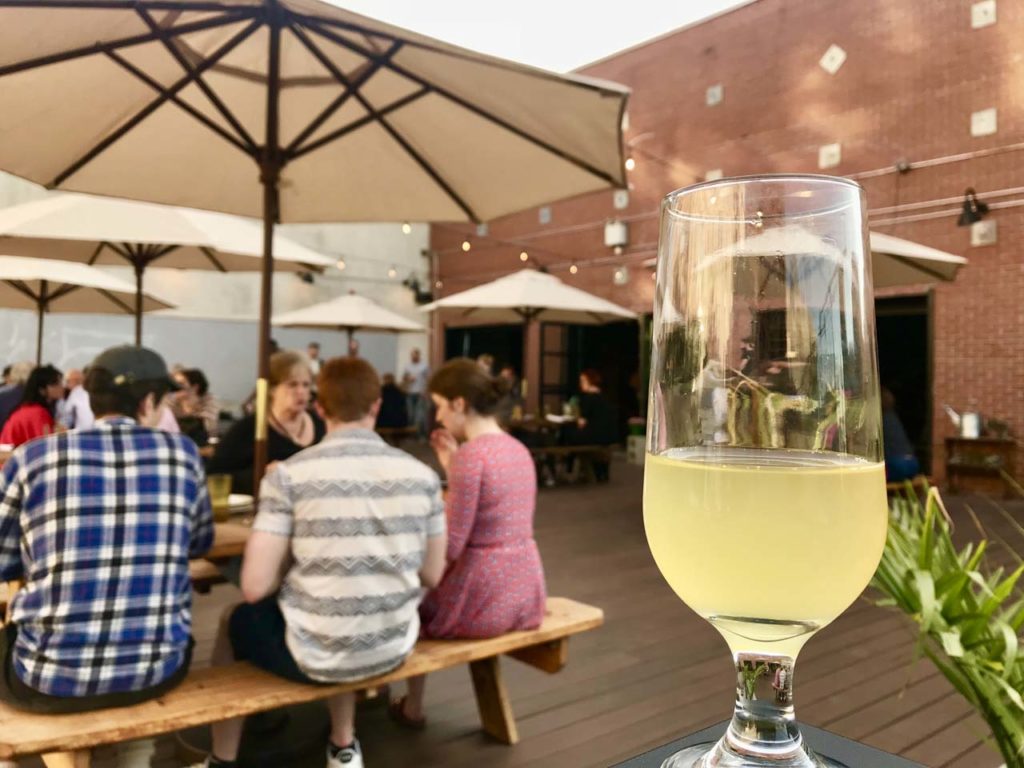
Upon returning from the Basque region, however, his mind was set only on cider. Wasting no time, he left his business, sold his wines, took what he had, and jumped on board. “I just like diving into things,” he said.
Yi started making cider in his garage, intending to recreate the natural, cloudy, very dry variety that had paired so diversely with food in Basque. It is a product, he detailed, that made the most of the apple itself, and included no carbonation or fillers. While in the business, Yi had made and blended wines occasionally, so had no qualms about jumping in. He describes the process of cider making as not much different from making white wine, and after his first batch came out surprisingly well, he convinced his sister, Susan, to join him as a business partner.
“The cider that is available here is typically not for food pairing,” said Yi. It is usually carbonated and produced with dessert apples, he explained, and so many are overly sweet. Hard cider, instead, should be made with bitter, tart, heirloom apples, with the sweetness coming from natural sugar only. Yi looked at the apples used in Europe, but discovered those varieties were not found on these shores. After considerable searching, Peter and Susan managed to source about 8,000 “ancient” apple trees, and purchased an orchard in New Paltz, New York to grow them (Twin Star Orchards, est. 2015, and open for seasonal picking, cider tasting, and food service).
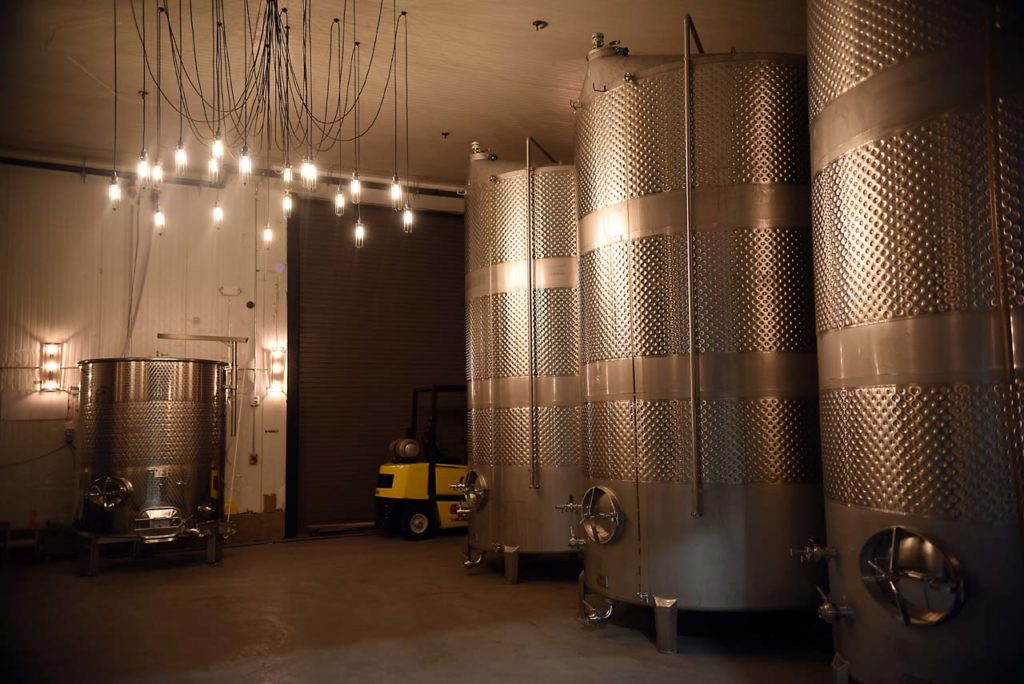
“Before prohibition, producers were using the right apples,” Yi noted. “And I think more people will rescue these heirloom varieties it is an exciting time in the industry to be changing history.”
While setting up shop upstate, they were also searching Brooklyn for a venue, and eventually landed on a 12,000 square foot former warehouse in Bushwick. In December 2017, Brooklyn Cider House opened its doors, bringing the Basque style sagardotegi dining Yi saw abroad to NYC. Dining there is interactive, social, and communal, and between courses guests can catch cider in glasses (in a guided tasting) straight from large 80 year old chestnut barrels from Asturias, Spain. Visitors can also see cider at various stages of aging.
“Our ciders are dry, living, and funky,” said Yi, speaking of the four varieties made: Bone Dry, Kinda Dry, and Half Sour all produced at his orchard, and Raw, made in Bushwick. Yi describes Raw as “the one you end with…like a Pinot Noir,” and Kinda Dry as the most fruity and user friendly. All are unfiltered, contain probiotics, and are made from a mix of varietals grown upstate as well as other sourced heirloom apples.
Meanwhile, at the sagardotegi, “You’re eating, and between courses, you’re catching cider amongst other diners and you’re drinking it before it goes at, ideally within 60 seconds,” said Yi, adding that instead of pouring a tall glass, the drink is best enjoyed in small pours, after the stream hits the glass and creates foam, releasing aroma and flavor.
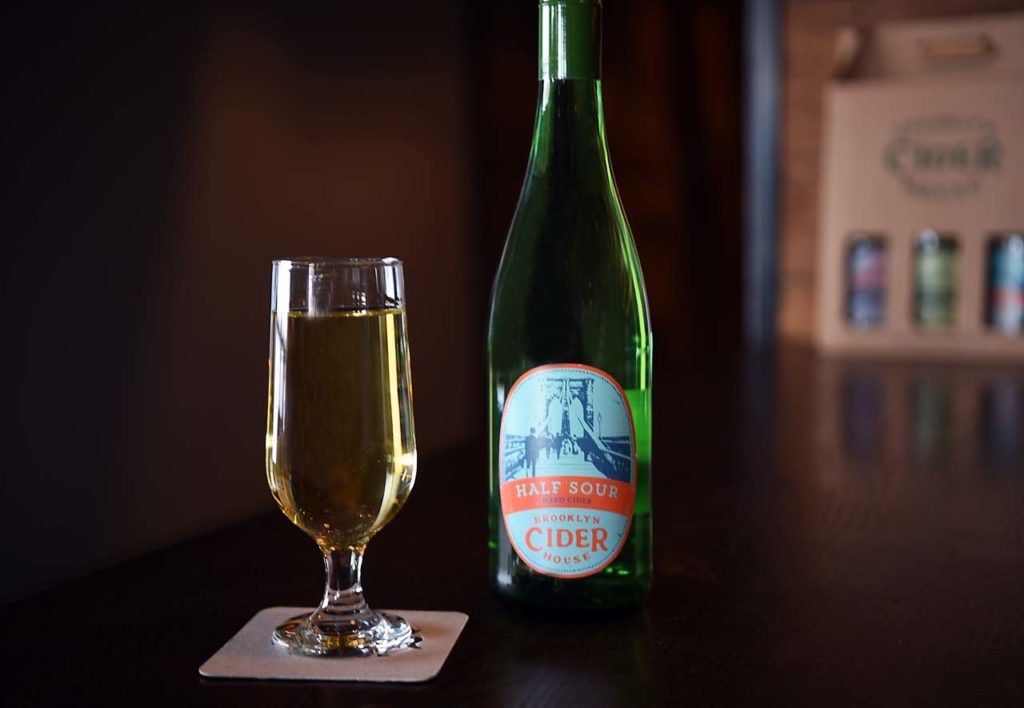
Yi also designed the business’s ingredient driven, family style menu, which features specialties like Tortilla de bacalao, seasonal vegetable salads, grilled whole snapper, and thick cut Cedar River ribeye. Bar menu items such as burgers and Korean fried chicken wings are other options. Brunch is served on weekends, and Yi sells bottles of cider on site, as well as at select NY retailers. A highlight is the four course prix fixe dining experience, with pairings, of course.
“What I want to do is convert one person a day to cider,” he said. “Once you get it, it’s a beverage you can’t live without. It is something that’s missing in America.”
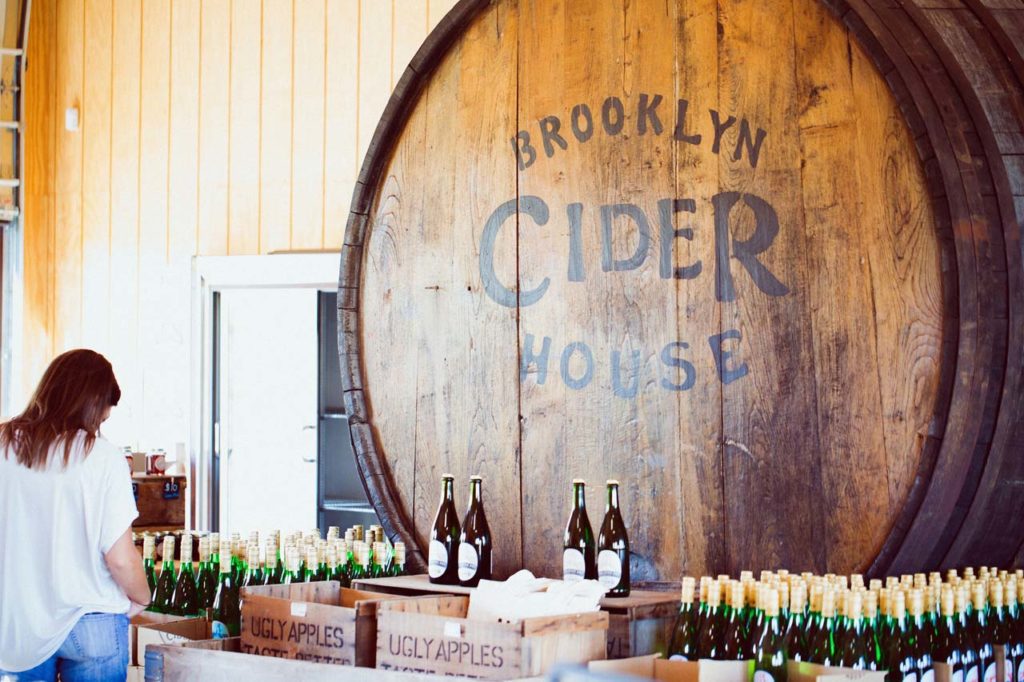
Brooklyn Cider House
1100 Flushing Avenue / 347.295.0308
brooklynciderhouse.com
